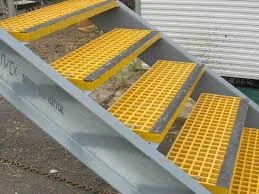
-
 Afrikaans
Afrikaans -
 Albanian
Albanian -
 Amharic
Amharic -
 Arabic
Arabic -
 Armenian
Armenian -
 Azerbaijani
Azerbaijani -
 Basque
Basque -
 Belarusian
Belarusian -
 Bengali
Bengali -
 Bosnian
Bosnian -
 Bulgarian
Bulgarian -
 Catalan
Catalan -
 Cebuano
Cebuano -
 China
China -
 China (Taiwan)
China (Taiwan) -
 Corsican
Corsican -
 Croatian
Croatian -
 Czech
Czech -
 Danish
Danish -
 Dutch
Dutch -
 English
English -
 Esperanto
Esperanto -
 Estonian
Estonian -
 Finnish
Finnish -
 French
French -
 Frisian
Frisian -
 Galician
Galician -
 Georgian
Georgian -
 German
German -
 Greek
Greek -
 Gujarati
Gujarati -
 Haitian Creole
Haitian Creole -
 hausa
hausa -
 hawaiian
hawaiian -
 Hebrew
Hebrew -
 Hindi
Hindi -
 Miao
Miao -
 Hungarian
Hungarian -
 Icelandic
Icelandic -
 igbo
igbo -
 Indonesian
Indonesian -
 irish
irish -
 Italian
Italian -
 Japanese
Japanese -
 Javanese
Javanese -
 Kannada
Kannada -
 kazakh
kazakh -
 Khmer
Khmer -
 Rwandese
Rwandese -
 Korean
Korean -
 Kurdish
Kurdish -
 Kyrgyz
Kyrgyz -
 Lao
Lao -
 Latin
Latin -
 Latvian
Latvian -
 Lithuanian
Lithuanian -
 Luxembourgish
Luxembourgish -
 Macedonian
Macedonian -
 Malgashi
Malgashi -
 Malay
Malay -
 Malayalam
Malayalam -
 Maltese
Maltese -
 Maori
Maori -
 Marathi
Marathi -
 Mongolian
Mongolian -
 Myanmar
Myanmar -
 Nepali
Nepali -
 Norwegian
Norwegian -
 Norwegian
Norwegian -
 Occitan
Occitan -
 Pashto
Pashto -
 Persian
Persian -
 Polish
Polish -
 Portuguese
Portuguese -
 Punjabi
Punjabi -
 Romanian
Romanian -
 Russian
Russian -
 Samoan
Samoan -
 Scottish Gaelic
Scottish Gaelic -
 Serbian
Serbian -
 Sesotho
Sesotho -
 Shona
Shona -
 Sindhi
Sindhi -
 Sinhala
Sinhala -
 Slovak
Slovak -
 Slovenian
Slovenian -
 Somali
Somali -
 Spanish
Spanish -
 Sundanese
Sundanese -
 Swahili
Swahili -
 Swedish
Swedish -
 Tagalog
Tagalog -
 Tajik
Tajik -
 Tamil
Tamil -
 Tatar
Tatar -
 Telugu
Telugu -
 Thai
Thai -
 Turkish
Turkish -
 Turkmen
Turkmen -
 Ukrainian
Ukrainian -
 Urdu
Urdu -
 Uighur
Uighur -
 Uzbek
Uzbek -
 Vietnamese
Vietnamese -
 Welsh
Welsh -
 Bantu
Bantu -
 Yiddish
Yiddish -
 Yoruba
Yoruba -
 Zulu
Zulu
fiberglass ducts demonstrate exceptional resistance against ...
The Exceptional Resistance of Fiberglass Ducts A Comprehensive Overview
In recent years, the HVAC (Heating, Ventilation, and Air Conditioning) industry has witnessed a significant shift towards the adoption of fiberglass ducts. These innovative ducts have garnered attention for their exceptional resistance to a variety of environmental factors, making them a preferred choice for both commercial and residential applications. This article delves into the reasons behind the remarkable properties of fiberglass ducts and their growing prominence in modern construction.
Understanding Fiberglass Ducts
Fiberglass ducts are constructed from a composite material consisting of a resin matrix and glass fibers. This unique construction provides several key benefits that traditional materials, such as metal and plastic, may lack. The lightweight nature of fiberglass, combined with its structural integrity, allows for easier handling and installation. Additionally, fiberglass ducts can be molded into various shapes and sizes, providing versatility in design and implementation.
Exceptional Resistance to Corrosion
One of the standout features of fiberglass ducts is their exceptional resistance to corrosion. In environments where moisture, humidity, and chemical exposure are prevalent, such as in industrial settings, traditional materials can degrade and rust over time. Fiberglass, on the other hand, does not corrode, ensuring longevity and reliability. This resistance to corrosive elements reduces the need for frequent replacements and maintenance, ultimately leading to cost savings over the lifecycle of the HVAC system.
Insulation Properties
Fiberglass ducts are also notable for their excellent insulation properties. The inherent thermal resistance in the material minimizes heat loss or gain, contributing to energy efficiency in HVAC systems. This is particularly advantageous in climate-controlled environments, where maintaining a consistent temperature is crucial. By reducing energy consumption, fiberglass ducts not only promote sustainability but also lower utility bills for consumers.
fiberglass ducts demonstrate exceptional resistance against ...

Sound Attenuation
Another key advantage of fiberglass ducts is their ability to attenuate sound. The porous structure of fiberglass provides natural sound insulation, helping to reduce noise generated by airflow within the ducts. In commercial buildings, where noise levels can significantly impact comfort and productivity, fiberglass ducts can play a crucial role in enhancing the internal acoustic environment. This feature adds to the overall quality of living and working spaces, making them more appealing to occupants.
Resistance to Mold and Mildew
Fiberglass ducts are inherently resistant to mold and mildew growth, a characteristic that is vital for maintaining indoor air quality. Traditional ducts, especially those made of metal or fiberboard, can become breeding grounds for mold if exposed to moisture. The non-porous nature of fiberglass prevents moisture accumulation, thereby inhibiting the conditions necessary for mold and mildew cultivation. This aspect is particularly important in healthcare facilities and schools, where air quality is paramount.
Environmental Considerations
In an era of increasing environmental consciousness, fiberglass ducts also stand out due to their eco-friendly attributes. They can be manufactured with recyclable materials and are free from harmful chemicals, aligning with green building standards. As more builders and property owners prioritize sustainability, the adoption of fiberglass ducts is likely to increase.
Conclusion
In summary, fiberglass ducts represent a significant advancement in HVAC technology, characterized by their exceptional resistance to corrosion, excellent insulation properties, sound attenuation capabilities, and mold resistance. As energy efficiency and indoor air quality continue to be critical considerations in building design, the use of fiberglass ducts is anticipated to grow. Their lightweight, durable, and eco-friendly nature makes them an ideal choice for modern construction projects, ultimately benefiting both builders and end-users alike. The future of HVAC systems looks brighter with the integration of fiberglass ducts, and as awareness grows, so too will their application across various industries.









